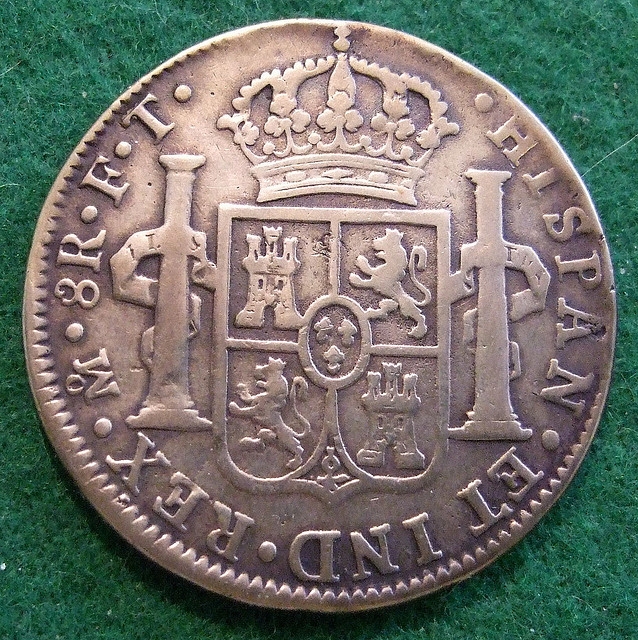Before the Morgan dollar, or even the pinetree shilling, metal coinage existed in the American colonies. Much of it was coinage that had been brought over with the early settlers from their home countries, but one particular coin originated in the Americas and could not, in fact, have existed as it did except for the wealth found in the New World. This is the Spanish piece of eight.
If you know your American history, you’ll know that the English were not the first to explore North America. They were simply the ones who settled most of what is now the United States and Canada. Many countries in Europe were interested in finding and claiming new territories. These include France, the Netherlands, Portugal, and, of course, Spain.
From Columbus’s historic voyage in 1492 well into the 18th century, Spain conquered territory after territory until it became the largest empire in the world. It was “the empire on which the sun never sets” long before Great Britain was. Great empires require money to operate, and the piece of eight became essential to this goal. At the time the first piece of eight was minted in 1497, the basic Spanish denomination was the real. A piece of eight was worth eight reales – thus the name.
The reason pieces of eight have remained so famous centuries after they stopped being minted and long after Spain’s control of its colonies was lost is that they appear in literature and specifically in exciting pirate stories like Robert Louis Stevenson’s Treasure Island. From there, pieces of eight made the short journey to fantastical treasure holds of later fictional pirates like Captain Hook and Captain Jack Sparrow. Why were their treasure chests full of Spanish coins?
It’s because coins were the easiest way to transport the enormous silver and gold riches that came out of the Americas. In the mid-16th century, the Spanish discovered a rich vein of silver in Bolivia’s Potosi, the “mountain of unimaginable riches” and compelled both natives and slaves from Africa to mine it. Eventually 40,000 tons of silver were shipped from this site alone and a mint was opened to coin pieces of eight. A tremendous amount of currency was generated and went all over the Spanish empire, funding wars, conquest, and settlement projects. Because they were made of silver, these coins had inherent value and were used for trade even outside the empire, including in the American colonies, in Asia and throughout the world. Some of these coins, a small fraction of them, made their way into the hands of pirates. Most of them got to their intended destination, however, because Spanish kings tended to frown upon entire shiploads of silver and gold going missing and took precautions.
As coins, pieces of eight, also known as Spanish 8 Reales or Spanish milled dollars, were both large and heavy. Their design changed quite a bit over time and eventually incorporated the reigning Spanish king, but the ones minted in the Americas contain the Spanish coat of arms and the pillars of Hercules. They are the direct ancestors of the American silver dollar, although they were much more valuable in the 16th century than silver dollars are today. During times of trouble with paper currency, Spanish milled dollars continued to be used to buy and sell goods and services. You may have heard the term “two bits” which remains in our language today. This meant two of the eight reales or one quarter of the value of a Spanish piece of eight.
If you would like to learn more about this “pirate treasure” or own a piece of it for yourself, Grand Rapids Coins would love to help you find a Spanish piece of eight – or 10 – for your collection. Make an appointment to talk to us today by calling 616-884-5048.

